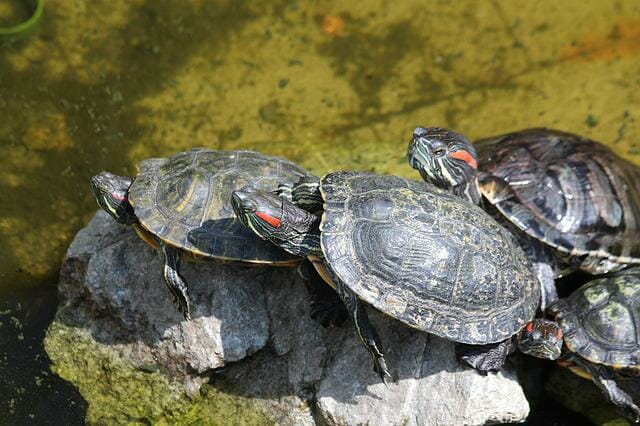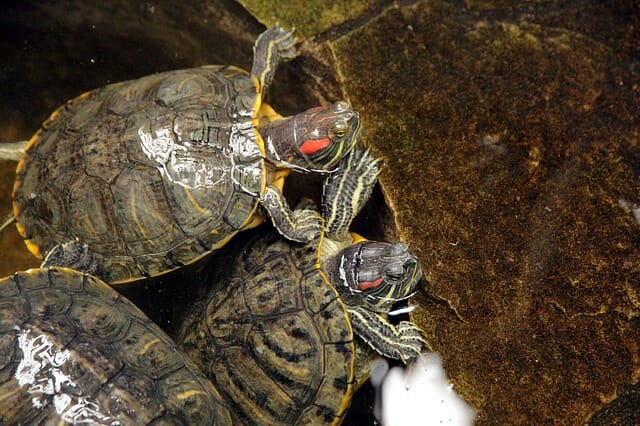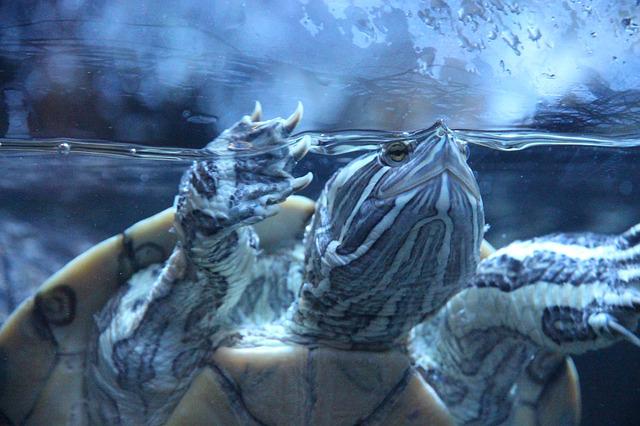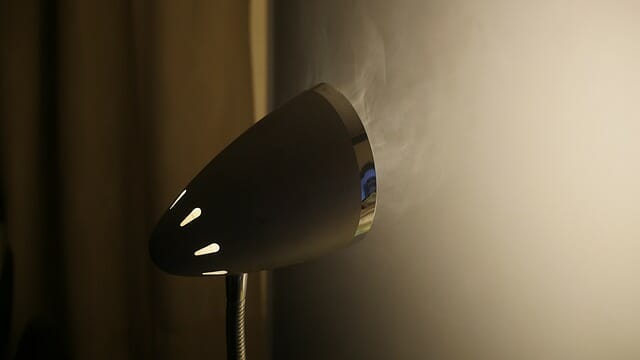Do Red-Eared Slider Turtles Need a Heat Lamp: Can They Survive Without It?

Red-eared slider turtles benefit from heat lamps in captivity – but they can survive without one. So if you’re considering buying a turtle as a pet or are currently keeping one in your home, it’s essential to know if they need heat lamps or not based on the climate in your location.
Table of Contents
What Is a Heat Lamp?
A heat lamp is a small, light bulb-like device that provides supplemental heat for reptiles and amphibians. Make sure you know how much wattage your heat lamp needs before purchasing it, as this information will be specific to your turtle’s enclosure size. Heat lamps come in different wattages and can be positioned anywhere in the enclosure, including under the tank or bedding.
Can Turtles Live Without a Heat Lamp?
Regarding turtle care, the most important thing to remember is to consult with your veterinarian. While red-eared slider turtles can live without a heat lamp, it’s essential to meet certain conditions. These turtles need adequate shade, cool temperatures in the summer months, and a diet that includes fresh water and insects.
If these conditions cannot be met, a heat lamp may be necessary to maintain body temperature. Keep an eye on your turtle’s temperature and adjust the lamp’s wattage accordingly.
Best Temperature for Red-Eared Slider Turtles
It is crucial to keep turtle basking temperatures comfortable and safe. To do this, the temperature should be kept between 65 to 85 degrees Fahrenheit. If you live in an area with a colder climate, you may need to use a higher wattage lamp – up to 100 watts. Remember that your veterinarian should also approve these temperatures!
Importance of Heat Lamp to Red-Eared Sliders
Red-eared slider turtles are native to the warm climates of the southeastern United States. Because of this, they need a heat lamp to help regulate their body temperature. Make sure you provide fresh water and food daily and move your turtle around regularly so they get ample exercise. Adding a light bulb or heating pad can help correct the problem if your turtle is not getting enough sunlight.

Do Turtles Need a Heat Lamp at Night?
Is your turtle cold? Does it seem to be struggling to keep warm during the night? If so, consider installing a heat lamp. But is it essential? The answer to this question depends on the type of turtle you have. While slider and soft-shell turtles don’t need a heat lamp, box turtles do.
Check with your vet before installing a heat lamp for any turtle – they may not be ready for it yet. Many other options are available that provide similar results without using a lightbulb! So if you’re unsure whether your turtle needs a heat lamp, err on the side of caution and consult with them first.
How Long Should You Keep the Heat Lamp On for the Red-Eared Sliders
A general rule of thumb is to keep the lamp on for six to eight hours daily, but this can vary depending on the turtle’s size and metabolism. You can always observe your turtle to see if they seem comfortable in the warmer environment. If you’re ever unsure, err on the side of caution and keep the lamp on for a bit longer.
Tips for Choosing a Proper Heat Lamp
Heat lamps are an essential part of turtle care, and for a good reason. They provide your turtle with the necessary light and warmth to survive. When choosing a heat lamp, consider the specific needs of your red-eared slider turtle.
Make sure to read the instructions that come with the lamp, as well as the turtle’s specific needs. Remember to purchase an appropriate-sized heat lamp and place it where it will provide the light and warmth your turtle needs. Be sure to watch your turtle using the heat lamp to ensure it’s not too hot or bright for them.
Choosing a Good Heating Light/ Heating Lamp
Choosing the perfect heating light for your reptile or amphibian tank is crucial. Not only does this lamp need to emit a warm white light, but it also needs to fit into your budget. So, before making a purchase, be sure to consider the following factors:
- Size and shape of the tank
- Wattage of lamp
- Type of bulb (incandescent, fluorescent)
- Color temperature

Choosing the Wattage
Selecting the correct wattage for your heat lamp is essential to avoid injuries. Make sure to choose a low wattage so it does not overheat your turtle but is high enough to produce the desired effect. The light should also be gentle, as strong lights can cause the turtle to burn injuries.
Mercury Vapor Bulbs
Mercury vapor bulbs are an excellent choice for red-eared slider turtles because they emit a low level of heat that helps the turtle regulate its body temperature. Heat lamps also help red-eared slider turtles warm up their eggs, which is essential for their reproductive cycle. Make sure to replace the bulb every year and choose one that emits low heat to keep your turtle safe and comfortable.
How to Position a Heat Lamp for Your Turtle
A heat lamp is excellent for slider turtles and other basking reptile species. In the summer, heat lamps provide basking heat and light. In the winter, heat lamps are used to help turtles hibernate.
Here are four tips to help you position and use a heat lamp for your turtle:
- Position the heat lamp during morning or evening hours when the temperature outside is more relaxed.
- Place the heat lamp in an area of your turtle’s enclosure high off the ground so they can’t get close to it.
- Ensure you turn off your turtle’s heat lamp when they hibernate for winter.
- Use basking spot temperatures to help you decide when to turn on/off the heat lamp for your turtle.

Heat Lamp Alternative: Can You Use Heat Pads for Turtles?
Heat lamps are the traditional method for raising turtles and some sliders, but they’re not necessary for all turtles. Heat pads are an excellent alternative if you don’t have a heat lamp or want to use it sparingly. Heat pads heat up quickly, so they’re ideal for basking area reptile heat lamps.
Place the pad on the basking area of your turtle enclosure and adjust the temperature as needed. Make sure to replace the pad every few weeks to ensure optimal warmth for your turtle!